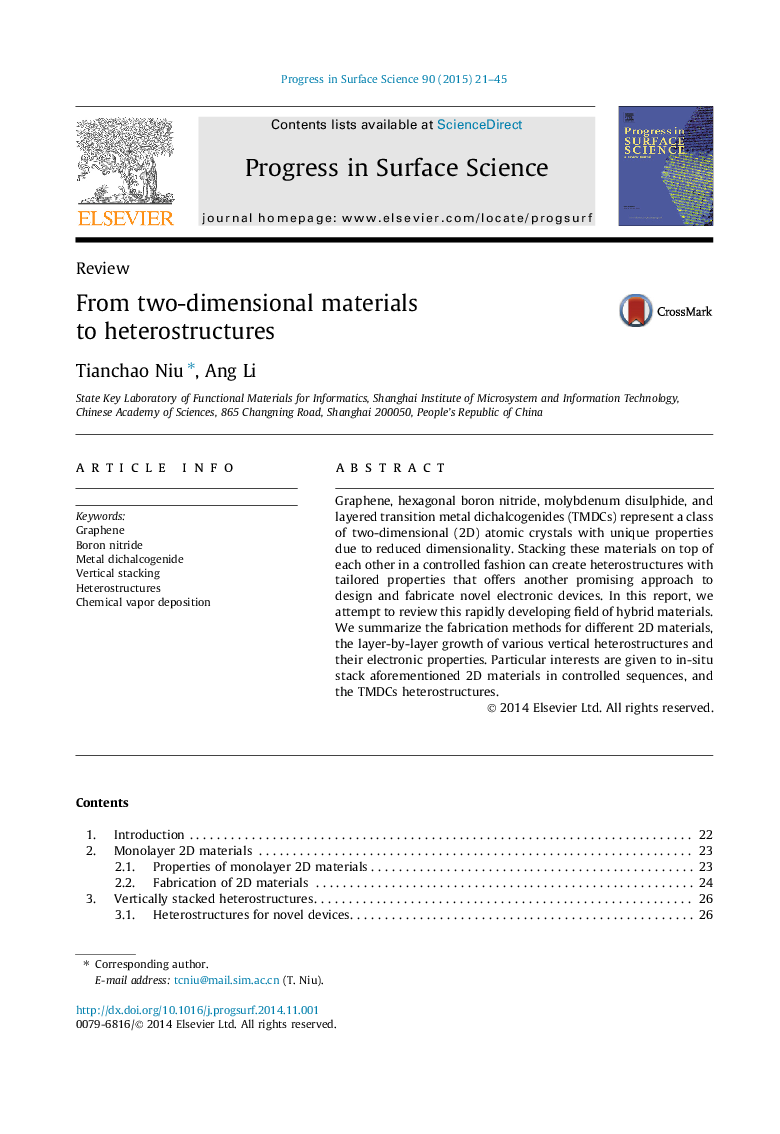| Article ID | Journal | Published Year | Pages | File Type |
|---|---|---|---|---|
| 5419956 | Progress in Surface Science | 2015 | 25 Pages |
Abstract
Graphene, hexagonal boron nitride, molybdenum disulphide, and layered transition metal dichalcogenides (TMDCs) represent a class of two-dimensional (2D) atomic crystals with unique properties due to reduced dimensionality. Stacking these materials on top of each other in a controlled fashion can create heterostructures with tailored properties that offers another promising approach to design and fabricate novel electronic devices. In this report, we attempt to review this rapidly developing field of hybrid materials. We summarize the fabrication methods for different 2D materials, the layer-by-layer growth of various vertical heterostructures and their electronic properties. Particular interests are given to in-situ stack aforementioned 2D materials in controlled sequences, and the TMDCs heterostructures.
Related Topics
Physical Sciences and Engineering
Chemistry
Physical and Theoretical Chemistry
Authors
Tianchao Niu, Ang Li,
